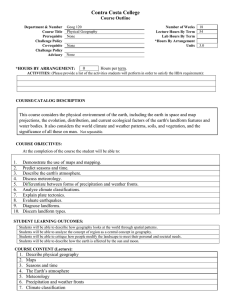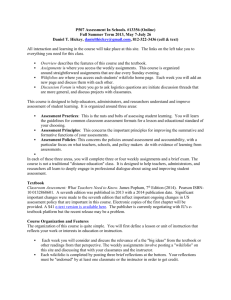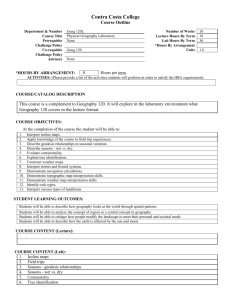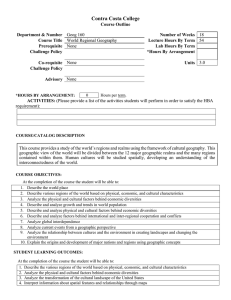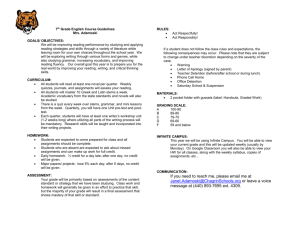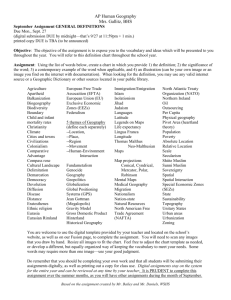Geog 130-S14 68KB Jun 03 2014 02:46:09 PM
advertisement
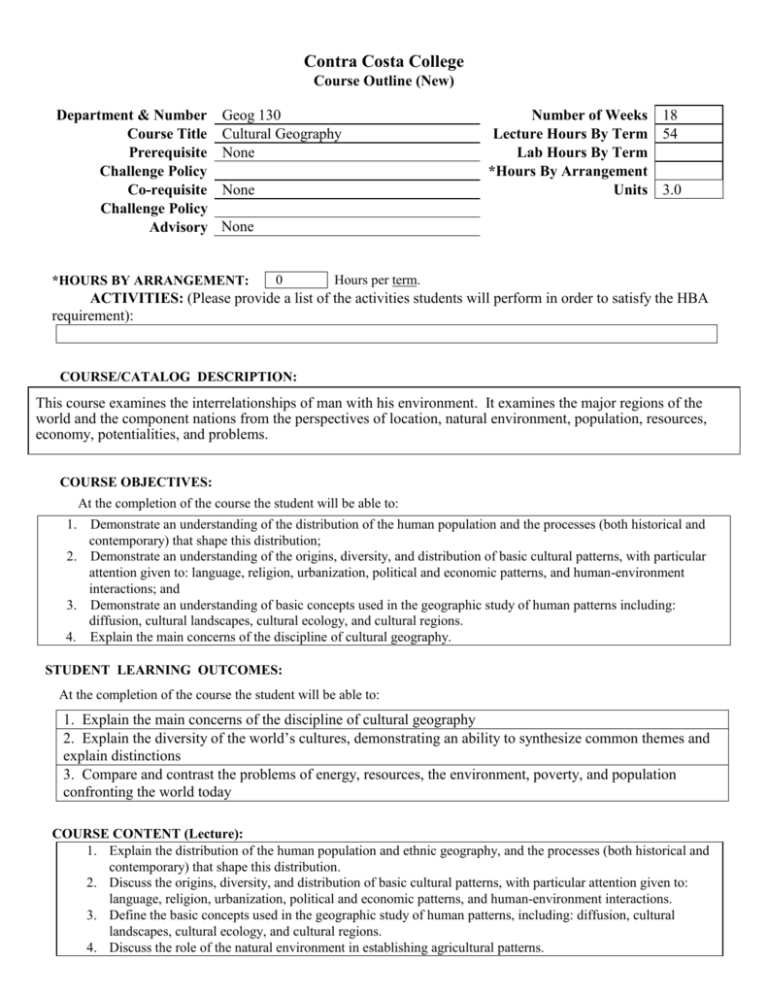
Contra Costa College Course Outline (New) Department & Number Course Title Prerequisite Challenge Policy Co-requisite Challenge Policy Advisory Geog 130 Cultural Geography None None Number of Weeks 18 Lecture Hours By Term 54 Lab Hours By Term *Hours By Arrangement Units 3.0 None *HOURS BY ARRANGEMENT: 0 Hours per term. ACTIVITIES: (Please provide a list of the activities students will perform in order to satisfy the HBA requirement): COURSE/CATALOG DESCRIPTION: This course examines the interrelationships of man with his environment. It examines the major regions of the world and the component nations from the perspectives of location, natural environment, population, resources, economy, potentialities, and problems. COURSE OBJECTIVES: At the completion of the course the student will be able to: 1. Demonstrate an understanding of the distribution of the human population and the processes (both historical and contemporary) that shape this distribution; 2. Demonstrate an understanding of the origins, diversity, and distribution of basic cultural patterns, with particular attention given to: language, religion, urbanization, political and economic patterns, and human-environment interactions; and 3. Demonstrate an understanding of basic concepts used in the geographic study of human patterns including: diffusion, cultural landscapes, cultural ecology, and cultural regions. 4. Explain the main concerns of the discipline of cultural geography. STUDENT LEARNING OUTCOMES: At the completion of the course the student will be able to: 1. Explain the main concerns of the discipline of cultural geography 2. Explain the diversity of the world’s cultures, demonstrating an ability to synthesize common themes and explain distinctions 3. Compare and contrast the problems of energy, resources, the environment, poverty, and population confronting the world today COURSE CONTENT (Lecture): 1. Explain the distribution of the human population and ethnic geography, and the processes (both historical and contemporary) that shape this distribution. 2. Discuss the origins, diversity, and distribution of basic cultural patterns, with particular attention given to: language, religion, urbanization, political and economic patterns, and human-environment interactions. 3. Define the basic concepts used in the geographic study of human patterns, including: diffusion, cultural landscapes, cultural ecology, and cultural regions. 4. Discuss the role of the natural environment in establishing agricultural patterns. COURSE CONTENT (Lab): METHODS OF INSTRUCTION: Lecture/discussion Audio-visual Cooperative learning INSTRUCTIONAL MATERIALS: NOTE: To be UC/CSU transferable, the text must be dated within the last 7 years OR a statement of justification for a text beyond the last 7 years must be included. Textbook Title: The Human Mosaic: A Cultural Approach to Human Geography Author: Mona Domosh et al. Publisher: W. H. Freeman Edition/Date: 12th edition, 2011 Textbook Reading Level: 22.4 Justification Statement: OUTSIDE OF CLASS WEEKLY ASSIGNMENTS: Title 5, section 55002.5 establishes that a range of 48 -54hours of lecture, study, or lab work is required for one unit of credit. For each hour of lecture, students should be required to spend an additional two hours of study outside of class to earn one unit of credit. State mandates that sample assignments must be included on the Course Outline of Record. Outside of Class Weekly Assignments Hours per week Weekly Reading Assignments (Include detailed assignment below, if applicable) 3 Reading #1: Read the textbook, then list and briefly describe five causes of forced immigration. Reading #2: Complete the assigned reading and write an essay considering the origin and diffusion of plant domestication. Weekly Writing Assignments (Include detailed assignment below, if applicable) 3 Problem Solving #1: Sketch maps of North America, South America, Africa, Asia, Europe, and the Pacific Rim, each on a sheet of standard 8.5” x 11” paper. Be sure to include national boundaries and capital cities, other major cities, major rivers, and mountain ranges. Weekly Math Problems (Include detailed assignment below, if applicable) Lab or Software Application Assignments (Include detailed assignment below, if applicable) Other Performance Assignments (Include detailed assignment below, if applicable) STUDENT EVALUATION: (Show percentage breakdown for evaluation instruments) 50 50 % % Midterm and Final Exam. Term Paper and assorted essays. GRADING POLICY: (Choose LG, P/NP, or SC) Letter Grade 90% - 100% = A 80% - 89% = B Pass / No Pass 70% and above = Pass Below 70% = No Pass 70% - 79% = C 60% - 69% = D Below 60% = F Prepared by: Manu Ampim Date: 4-18-14 Revised form 10/13 x Student Choice 90% - 100% = A 80% - 89% = B 70% - 79% = C 60% - 69% = D Below 60% = F or 70% and above = Pass Below 70% = No Pass

